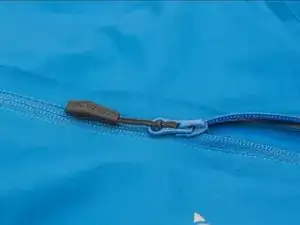
How do I lubricate a sticky zip on my Vaude clothing?
These are some common tools used to work on this device. You might not need every tool for every procedure.
Having trouble with your zipper? Use our Zipper Identification tool to identify and help diagnose your zipper.
Similar to snaps, zippers (formerly known as clasp lockers) are used to fasten two sections of material together. Unlike snaps, zippers form a complete closure between the two sections using interlocking teeth, pulled together or separated by means of a plastic or metal zipper pull. Zippers fail in several places and consequently repairs range from replacing a slider to replacing the whole zipper.
Zippers are used in clothing, luggage and other bags, sporting goods, camping gear, and many other items. Whitcomb L. Judson, an American inventor from Chicago, is sometimes credited as the inventor of the zipper. However, Ludson’s zippers were designed to use on footwear rather than on clothing. Zippers are based on interlocking teeth and were initially called “hookless fasteners.” Zippers consist of two rows of protruding teeth that can link together. The teeth are typically made of either plastic or metal. The slider, which is generally operated by hand, moves along the rows of teeth to open or close them.
Zippers can be used to increase or decrease the size of an opening, separate or join two sides of a single garment, detach or attach a separable part of the garment from or to another, or be used to decorate an item.
Problems with zippers often lie with the zipper slider. If the slider becomes worn out and does not align properly, it can fail to join the zipper’s teeth. With plastic-teethed zippers, broken teeth are another common problem. Use the guides on this page to repair or replace broken zippers.